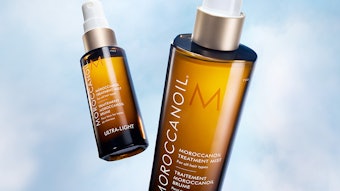A recent news article stated that Walmart now believes its major retail competitor is the myriad of dollar stores. For the past decade, many articles have been written about Walmart’s lust for the Target customer. Target products have been more design-oriented and higher priced, with the assumption that the Target customer was more sophisticated and had more disposable income. But with the economy as it is, most involved with selling products assumed that Walmart would win the battle with its purchasing power and lower prices. It proves the sales adage that there’s always someone offering a lower price.
The private label market, too, has thrived during current economic downturns (as noted in many 2011 market reports that appeared in GCI magazine). When the higher priced brands languished, private label equivalents picked up those consumers looking only for cost value.
Large brand owners, though, have room to reduce prices—whether through couponing or specials—further pushing down price expectations and forcing private labels brands to reduce prices even further.
There was a definite downturn in high end products sales in 2010, but that trend seems to be reversing now and higher end is on rebound. Consumers just expect more for their money now than they did, and assess value differently—and value only sometimes relates directly to price. Consumers may still spend more for a bottle of shampoo, a lotion or color cosmetics, but they now expect something truly special—whether with the product or the package or both.
Consumers are no longer content with what they’ve always bought or used; they expect more if they’re going to pay more. And marketers are responding.
Response to New Value
The response to changed consumer perception of value does not seem to be complete overhauls, but a re-assessment of the product and it’s use—and often times, it’s a matter of addressing the functionality. Assuming a product’s efficacy is good and also assuming that competitors’ products are similar, then the “use experience” can add value. A good example is Lysol’s touchless soap dispenser. It’s a relatively expensive item compared to what’s become a commodity category, however, consumers see it as a value—an appliance. The added benefit for consumers is that only refills, not the entire dispenser, need to be repurchased—and the obvious benefit to the brand is that only its refills fit in the appliance.
It’s the same as giving away the razor to keep selling the blades—though, Lysol doesn’t have to give away the dispenser to earn the first buy.
This demonstrates an opportunity: As consumers who can’t or won’t spend extra trade down, and some retailers and brands chase them with less expensive formulas and packages, the competition decreases for brands that maintain their quality and added value or even increase both—giving consumers a better experience for the extra spend. Many consumers, too, believe “that which costs little is valued less,” as Spanish author Miguel de Cervantes wrote, and place more value on the products on which they have spent more.
The Middle Ground; Small Considerations
A consideration that appears to be overlooked is that products do not have to be in the top or bottom tiers to succeed. It’s often the little extras that offer a better consumer experience and, therefore, create brand loyalty. Moderately priced products, those that seem to have taken the biggest hit with this economy, can benefit from providing the little extras that consumers will notice (creating that first buy) and not want to give up (translating to continued buys).
TricorBraun, for example, developed a concept called the scoop-spot (patents pending), a small indentation in the front and back indentation of the mouth of a blow molded jar that holds or nests a measuring scoop. This allows the scoop to remain up and out of the powder product for easy access and use. Although it was originally conceptualized for protein powders, it is a concept that translates for many products/product categories—coffee, for example. In TricorBraun’s consumer insight studies, it was found that this small convenience can make the difference between a repurchase of the same brand or a movement to another possibly less-expensive brand. And value added can be added to value added: TricorBraun developed a way to mold the scoop with a built-in desiccant to absorb harmful moisture in products that are moisture sensitive. The small convenience further impacts consumers’ experience and perception of the product.
The cost of such small additions can be insignificant compared to consumers’ positive reaction, and today’s consumers understand value versus price—best stated by Warren Buffet: “Price is what you pay. Value is what you get.”
Craig Sawicki is the chief creative officer of TricorBraun. With 32 years of experience at W. Braun Company and TricorBraun, including as a package designer and design engineer, he has firsthand experience in every stage of new package and product development. In his current role, he works with customers to develop packaging that will give their products the branded image they desire and need.










